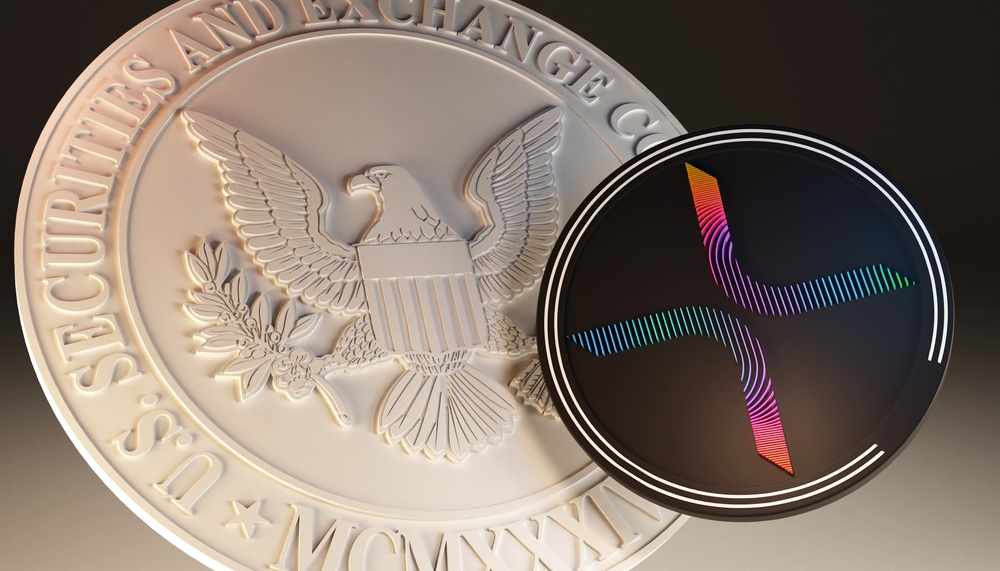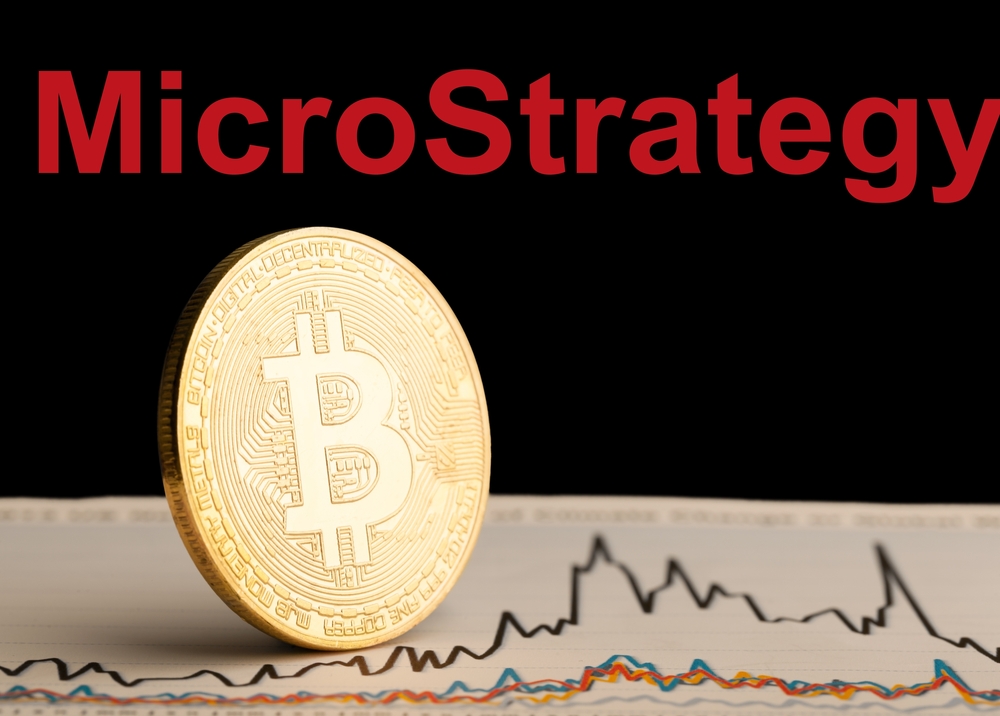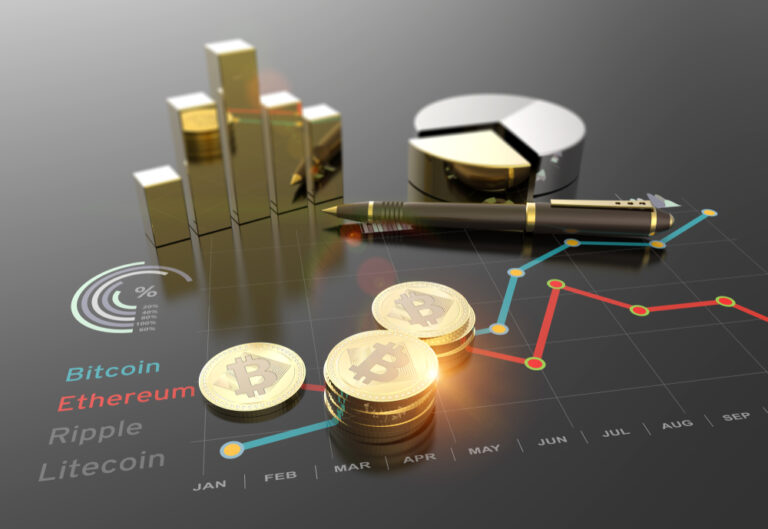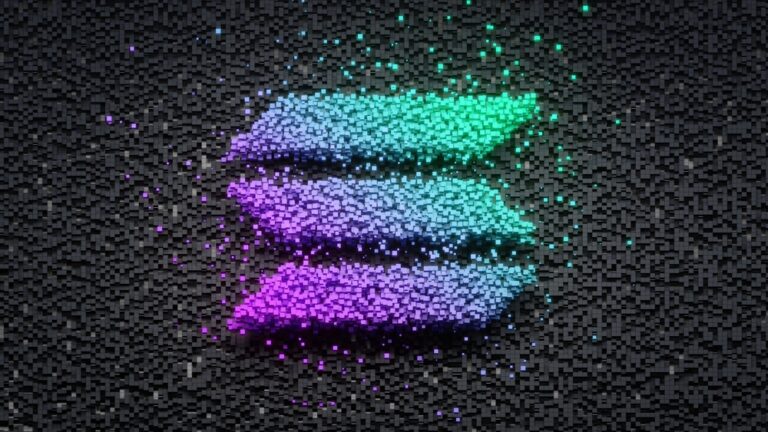Table of Contents
ToggleIntroduction
Cardano’s Age of Voltaire is an exciting era in the journey of the Cardano blockchain. It represents a phase where governance becomes decentralized, putting power directly into the hands of the community. The Voltaire era introduces innovative systems and opportunities for self-sustaining development, ensuring that every ADA holder has a voice in the network’s evolution.
In the Age of Voltaire, the focus shifts to the concept of ultimate decentralization. This means that the Cardano network will no longer be managed by a single entity but by a collective of stakeholders. They include developers, users, and stake pool operators (SPOs). This level of participation is set to revolutionize how decisions are made and how the network adapts to future challenges.
The introduction of the Treasury System is a game-changer in Cardano’s governance model. It involves a pool of funds that can be used to finance development projects, encouraging continuous innovation. As a result, proposals for new features and improvements can be implemented, provided they get enough support from the community. This not only propels Cardano forward but also aligns with its vision of creating a sustainable and inclusive ecosystem.
Key Takeaways
- The Voltaire era decentralizes governance, empowering the community.
- The Treasury System funds development projects through community support.
- Stakeholders have increased influence in Cardano’s decision-making process.
The Dawn of Cardano’s Age of Voltaire
The Age of Voltaire marks an exciting era for the Cardano blockchain. As one of the final phases in Cardano’s development, this period promises to usher in a new wave of decentralized civilization.
Voltaire, the Enlightenment thinker, is symbolically linked to this phase. Just as Voltaire advocated for freedom and democracy, Cardano aims to implement decentralized governance.
Key Highlights of the Age of Voltaire:
- Governance: Cardano introduces a voting system, allowing stakeholders to make decisions about the blockchain’s future.
- Treasury: A portion of transaction fees will fund proposals that enhance Cardano’s ecosystem.
- Community Involvement: Encourages widespread participation, ensuring the community has a direct say in development.
The decentralized governance system is designed to be fair and transparent. This is in line with Voltaire’s ideals of reason and reform.
Important Aspects:
| Aspect | Description |
|---|---|
| Voting | Enables stakeholders to vote on proposals |
| Treasury | Funds development using a portion of transaction fees |
| Proposals | Community members can submit improvement proposals |
Cardano’s Age of Voltaire represents more than just technological progress. It embodies a philosophical shift towards a decentralized, democratic system.
In this era, every stakeholder has a voice, making the blockchain more resilient, flexible, and future-ready. This symbolizes a bright future where technology and community come together.
Voltaire Era Explained
The Voltaire era marked a significant period in history, characterized by dramatic shifts in governance and the creation of innovative financial systems.
Governance Revolution
During the Voltaire era, there was a major transformation in governance. Old, autocratic systems gave way to ideas of democracy and individual rights. Voltaire and his contemporaries, like Rousseau and Montesquieu, pushed for a separation of powers in government.
The concept of checks and balances became crucial. Monarchs could no longer rule without accountability. These ideas helped shape modern democratic institutions and inspired political reforms across Europe and America. Liberté, égalité, fraternité became the rallying cry for change, emphasizing freedom, equality, and brotherhood.
Voltaire’s criticism of absolute monarchies and aristocratic privileges was powerful. His writings encouraged people to challenge traditional authorities. This era paved the way for more democratic forms of governance that valued human rights and personal freedoms.
Decentralized Treasury System
The economic ideas during the Voltaire era also saw innovation. Traditional centralized treasuries were questioned, and the idea of a decentralized treasury system emerged. This new system aimed to distribute financial control more evenly, reducing the risk of corruption and misuse of funds.
Voltaire was inspired by earlier thinkers like Cardano, who advocated for more transparent financial systems. He believed that decentralized financial management would lead to better accountability and efficiency. This idea resonated in many of his works and influenced economic policies during and after his time.
Decentralized treasuries meant that communities or regions had more control over their finances. This shift allowed for more localized decision-making and better allocation of resources. It created a more transparent and accountable financial system that was less prone to abuse.
The Voltaire era’s innovative ideas in governance and treasury management significantly shaped modern political and economic systems, making it a period of enlightenment and progress.
The Power of Community and Participation
Cardano’s Age of Voltaire emphasizes the impact of community involvement and the significance of having voting rights. Stakeholders play a crucial role in the decision-making process, and the contributions of community members drive the platform forward.
Stakeholders and Voting Rights
Stakeholders in Cardano have a unique role. By holding ADA tokens, they gain voting rights. These rights allow them to participate in important decisions for the network.
Voting Rights:
- Voting rights are linked to the amount of ADA held.
- Stakeholders can vote on proposals that shape Cardano’s future.
- They can influence upgrades, funding for projects, and more.
Delegation:
- Stakeholders can delegate their voting power to others.
- This ensures their voice is heard even if they cannot vote directly.
- Delegation helps in making the voting process more inclusive.
Stakeholders’ involvement strengthens the network and ensures everyone has a say in its growth.
Community Members’ Contributions
Community members contribute in various ways. Their ideas, feedback, and active participation are vital.
Ideas and Feedback:
- Proposals: Community members submit proposals for development.
- Feedback: They provide crucial feedback on ongoing projects.
Active Participation:
- Discussion Forums: Engagement in forums helps shape ideas.
- Meetups and Events: Attending events fosters collaboration.
Projects:
- Development: Some community members actively develop new features.
- Content Creation: Others create educational content to spread knowledge.
Every community member, regardless of their technical skill, plays an essential part in Cardano’s ecosystem, pushing it forward toward innovation and growth.
Ultimate Decentralization
Cardano’s Age of Voltaire emphasizes achieving full decentralization. Key focuses include decentralizing governance models and mapping out a clear path to this ultimate goal.
Roadmap to Full Decentralization
The journey to full decentralization for Cardano is intricate and well-structured. The roadmap includes several stages, each designed to reduce centralization and increase community involvement.
Initially, the network was managed by a centralized foundation and developers. Over time, control shifts to the community. This phased approach ensures a smooth transition while maintaining security and functionality. Each milestone on this roadmap provides opportunities for stakeholders to participate in the network’s decision-making processes. These stages include staking pools, introducing smart contracts, and implementing governance frameworks.
Cardano’s Voltaire era focuses on making the network self-sustaining and fully decentralized. This includes setting up a treasury system to fund future development through community votes.
Decentralized Governance Models
Decentralized governance is at the heart of Cardano’s mission. The Voltaire era introduces mechanisms that allow stakeholders to have a direct say in the network’s evolution.
One key component is the Catalyst project, which provides a decentralized funding mechanism for community projects. Through this, stakeholders propose, discuss, and vote on project funding. Additionally, the treasury system ensures that funds are allocated based on collective decisions.
Voltaire also aims to replace the central authority with a decentralized system that allows all participants to propose and vote on protocol changes. This system not only democratizes decision-making but also ensures that the network adapts organically based on community needs.
The Treasury System and Its Impact
The Treasury System during Cardano’s Age of Voltaire plays a crucial role in project funding and financial management. It allows for structured development initiatives and ensures careful planning of yearly expenditures.
Funding Future Development
The treasury is key in supporting innovative projects. Using a decentralized model, the system collects funds from a variety of sources, including transaction fees and staking rewards. This pool of funds is then allocated to proposed projects that have passed community voting. This ensures transparency and community participation in deciding where resources are invested.
Projects funded include advancements in blockchain technology, decentralized applications, and educational programs. The goal is to drive continuous improvement and foster an ecosystem that stays ahead in the competitive blockchain space. This system not only secures current developmental needs but also ensures resources for long-term growth.
Annual Budgets and Treasury Withdrawals
The annual budgeting process is meticulous, aimed at balancing development needs with financial sustainability. Each year, proposals for funding are submitted and reviewed according to their potential impact and alignment with Cardano’s goals.
After approval, funds are withdrawn from the treasury and allocated to these projects. Regular audits and community oversight are critical, helping to prevent misuse of funds and ensuring that each budgetary allocation yields positive results. This transparency builds trust within the community and maximizes the treasury’s impact on ecosystem growth.
This structured approach to budgeting and withdrawals maintains financial health, allowing for consistent progress and innovation.
The Role of Stake Pool Operators (SPOs)
Stake Pool Operators (SPOs) are critical to Cardano’s ecosystem. They ensure the network’s health and stability, making the staking and delegation process efficient for ADA holders.
Key Components of Cardano’s Ecosystem
SPOs form the backbone of Cardano’s decentralized network. They manage stake pools where ADA holders can delegate their ADA. The delegation process allows ADA holders to contribute to network security without running a stake pool themselves. This system encourages more participants to join, helping to secure the network further.
Stake pools are run by operators who have the technical know-how and the infrastructure to maintain a node. SPOs earn rewards for their services, a part of which is shared with ADA holders who delegated their stakes. This reward system incentivizes both operators and ADA holders, fostering a robust and vibrant ecosystem.
Maintaining Network Health
SPOs play a pivotal role in maintaining the network’s health. They ensure that the Cardano blockchain remains secure and operational. By validating transactions and creating new blocks, they keep the network running smoothly. This task requires not only technical skills but also a commitment to maintaining high uptime and performance.
Regular updates and maintenance are essential for a stable network. SPOs must stay current with the latest Cardano upgrades, like the Voltaire and Catalyst projects. These updates often require changes to the operations and configurations of the stake pools, making the role of SPOs both challenging and rewarding.
ADA holders benefit from this as it provides a secure and efficient way to participate in the network, promoting a more decentralized and robust system.
Implementing Cardano Improvement Proposals
Implementing Cardano Improvement Proposals (CIPs) involves key steps and specific actions that enhance the Cardano ecosystem. This section covers CIP 1694 in focus and the amendment process.
CIP 1694 In Focus
CIP 1694 represents a significant upgrade to the Cardano network. Named after the birth year of Voltaire, this proposal introduces new governance actions that enable more community involvement.
The main aim of CIP 1694 is to facilitate decentralized decision-making. By providing a structured approach, this proposal enhances transparency and inclusivity. Key features include regular voting periods, a treasury system for funding, and special committees for overseeing various projects.
These mechanisms ensure that stakeholders have a voice. Voters can now propose changes, allocate funds, and approve projects. This enriched participation is crucial for the future of Cardano. CIP 1694 is thus seen as a milestone in evolving Cardano’s governance model.
The Amendment Process
The amendment process for Cardano Improvement Proposals like CIP 1694 starts with drafting and peer review. Contributors from the community draft the CIP and share it publicly for feedback. This collaborative approach helps refine the proposal before any decision is made.
Once the draft is ready, it enters a voting phase. Stakeholders cast their votes, and for a CIP to pass, it must secure a majority. If approved, the proposal moves forward for implementation. If not, it may be revised and re-submitted.
After a successful vote, technical teams work to integrate the changes. The amendment process ensures robust checks and balances, making it a thorough yet inclusive system. This structured approach ensures that each CIP is vetted rigorously to benefit the entire network.
Historical Perspectives: From Shelley to Voltaire
Cardano’s development has seen significant changes with the adoption of new hard forks and evolving node technology. These aspects are crucial for understanding how the platform has maintained its edge in the blockchain space.
Transitional Hard Forks
Shelley introduced the concept of decentralization to the Cardano network, shifting from a federated model. This was a key moment, as it allowed users to stake and earn rewards, enhancing community engagement.
The Nd Fork followed, focusing on improving performance and scalability. These updates aimed to make the network more robust and secure, addressing some of the initial criticisms about speed and efficiency.
With the Chang Hard Fork, the emphasis was on smart contracts and enhanced interoperability, allowing Cardano to compete with other blockchain platforms like Ethereum. This hard fork was instrumental in attracting new developers and projects to the ecosystem.
Evolving Cardano Nodes
Cardano nodes have continually evolved to support the network’s growing complexity. The early stages saw Node 9.0, which brought improvements in transaction speed and network reliability.
The development of new nodes has also been pivotal. Each iteration, including updates post-Node 9.0, has aimed at enhancing functionality and ensuring seamless transitions during hard forks. Improved synchronization and data handling have been part of these updates, making the network more user-friendly.
By continually refining their nodes, Cardano has managed to stay ahead in the competitive blockchain space. Whether it’s processing transactions or supporting complex smart contracts, these nodes have been critical to the network’s success.
On the Horizon: The Basho and Goguen Era
Cardano is entering a thrilling period with a significant focus on enhancing performance and implementing smart contracts. The Basho Era centers on scalability improvements, while the Goguen Era introduces native assets and smart contract functionalities.
Focusing on Scalability and Performance
The Basho Era aims to improve Cardano’s scalability and performance. This era introduces sidechains to help with transaction load, enabling the main blockchain to handle more transactions smoothly. Sidechains can operate independently but still connect to the main blockchain, making the system more efficient.
By enhancing scalability, transactions become faster and can support more decentralized applications (dApps). This improvement increases the network’s capacity to handle a larger user base and more complex interactions.
Basho’s upgrades are crucial for Cardano’s future, providing a robust foundation for growth. High performance and scalability are key for mass adoption, ensuring that users experience quick and reliable transactions.
Smart Contracts and Native Assets
The Goguen Era focuses on integrating smart contracts and supporting native assets. Smart contracts allow developers to create and deploy decentralized applications on the Cardano blockchain. These contracts are self-executing agreements with the terms directly written into code, enabling trustless transactions.
Native assets allow users to create their own tokens, which can be used in a variety of ways, from creating new digital currencies to tokenizing real-world assets. Unlike tokens on other blockchains, native assets on Cardano do not require custom code, reducing complexity and potential errors.
This era enhances Cardano’s ecosystem, making it more versatile and attractive for developers. With native assets and smart contracts, Cardano becomes a powerful platform for innovation in the blockchain space.
Cardano’s Constitution: A Sustainable Vision
The Cardano community is working on a sustainable constitution to ensure long-term stability and democracy within its ecosystem. It aims to create a democratic framework based on immutable principles that guide its future direction.
Drafting a Community-Driven Constitution
Cardano’s constitution is being crafted by the constitutional committee to reflect the collective will of the community. The process is open and inclusive, inviting stakeholders from various backgrounds to contribute.
They start by gathering input from developers, investors, and users. This helps in creating a document that addresses common concerns and aspirations.
Meetings and debates play a critical role in this stage. The committee ensures the constitution aligns with Cardano’s goals of decentralization and sustainability. By engaging everyone, they aim to build a robust document that guides the project’s future.
Immutable Principles for a Democratic Ecosystem
Key to the Cardano constitution is its foundation on immutable principles. These principles ensure the ecosystem remains democratic and resistant to undue influence.
Transparency is one such principle. All changes and decisions must be open for public scrutiny, fostering trust within the community.
Additionally, fair representation ensures every stakeholder group has a voice. This democratic approach prevents any single entity from controlling the direction.
Sustainability is another core principle. The constitution requires mechanisms for ongoing community involvement and adaptability to future challenges, ensuring the project’s long-term viability.
The Future of Ada: Market Forces and Predictions
The future of Ada holds exciting potential. As a key player in the cryptocurrency space, Ada’s price movements catch the attention of many investors.
Recent analysis shows that Ada’s market capitalization has been growing steadily. Many experts predict that this trend will continue as more people recognize the benefits of Ada tokens.
Influencing Market Forces
Several factors could influence Ada’s future. The rise of central bank digital currencies (CBDCs) is one. The transition from cash to digital currencies could boost interest in cryptocurrencies like Ada.
Additionally, market regulation changes might affect Ada’s price. New regulations can create both opportunities and challenges for Ada and other cryptocurrencies.
Technological Advancements
Technology plays a crucial role in predicting Ada’s growth. Innovations in blockchain technology enhance the security and efficiency of Ada transactions. This is likely to attract more users and investors.
Popularity and Adoption
The growing popularity of cryptocurrency as a mainstream investment is another positive sign. More people are getting familiar with Ada, resulting in increased demand. As adoption rates go up, so does market capitalization.
Investment Interest
Many financial analysts see Ada tokens as a strong future investment. Diverse applications and robust technology make Ada appealing to both retail and institutional investors.
In summary, various factors like market forces, technological advancements, and increasing adoption indicate a promising future for Ada in the world of cryptocurrencies.
For more detailed insights, visit the pages on predictions and market forces in the cryptocurrency domain here, and on the rise of central bank digital currencies here.
Frequently Asked Questions
Cardano’s Voltaire phase brings revolutionary advancements, new projects, and exciting developments. Here’s what you need to know about the launch date, upcoming innovations, and the impact of the Chang hard fork.
What revolutionary advancements can we expect with Cardano’s Voltaire phase?
Cardano’s Voltaire phase will introduce decentralized governance, enabling stakeholders to vote on network improvements. This phase will also integrate a treasury system to fund future projects, ensuring the Cardano ecosystem can grow and evolve sustainably.
When is the exciting launch date for the Cardano Voltaire update forecasted?
The Voltaire phase is expected to launch in Q4 2024. This update will mark a significant milestone, bringing unprecedented governance and funding mechanisms to the platform.
Are there any thrilling new projects lined up in the Cardano roadmap for 2024 and beyond?
Yes, there are several exciting projects in the pipeline. These include enhanced smart contract functionalities, new DeFi applications, and cross-chain interoperability projects. These innovations aim to make Cardano more versatile and robust.
How will the Cardano Chang hard fork propel the ecosystem into a new era?
The Chang hard fork will significantly upgrade the network’s scalability and security. It will introduce new optimizations, making transactions faster and cheaper. This will make Cardano more competitive and user-friendly.
As Cardano enthusiasts, what should we anticipate after the Voltaire phase is fully implemented?
After Voltaire, expect a more democratic and self-sustaining ecosystem. Stakeholders will have a direct say in the project’s future, making Cardano one of the most community-driven blockchain platforms.
What are the latest and most groundbreaking developments announced in Cardano’s 2025 vision?
Cardano’s 2025 vision includes advancements in quantum-resistant cryptography, enhanced privacy features, and partnerships with major tech firms. These developments aim to keep Cardano at the forefront of blockchain innovation.




















